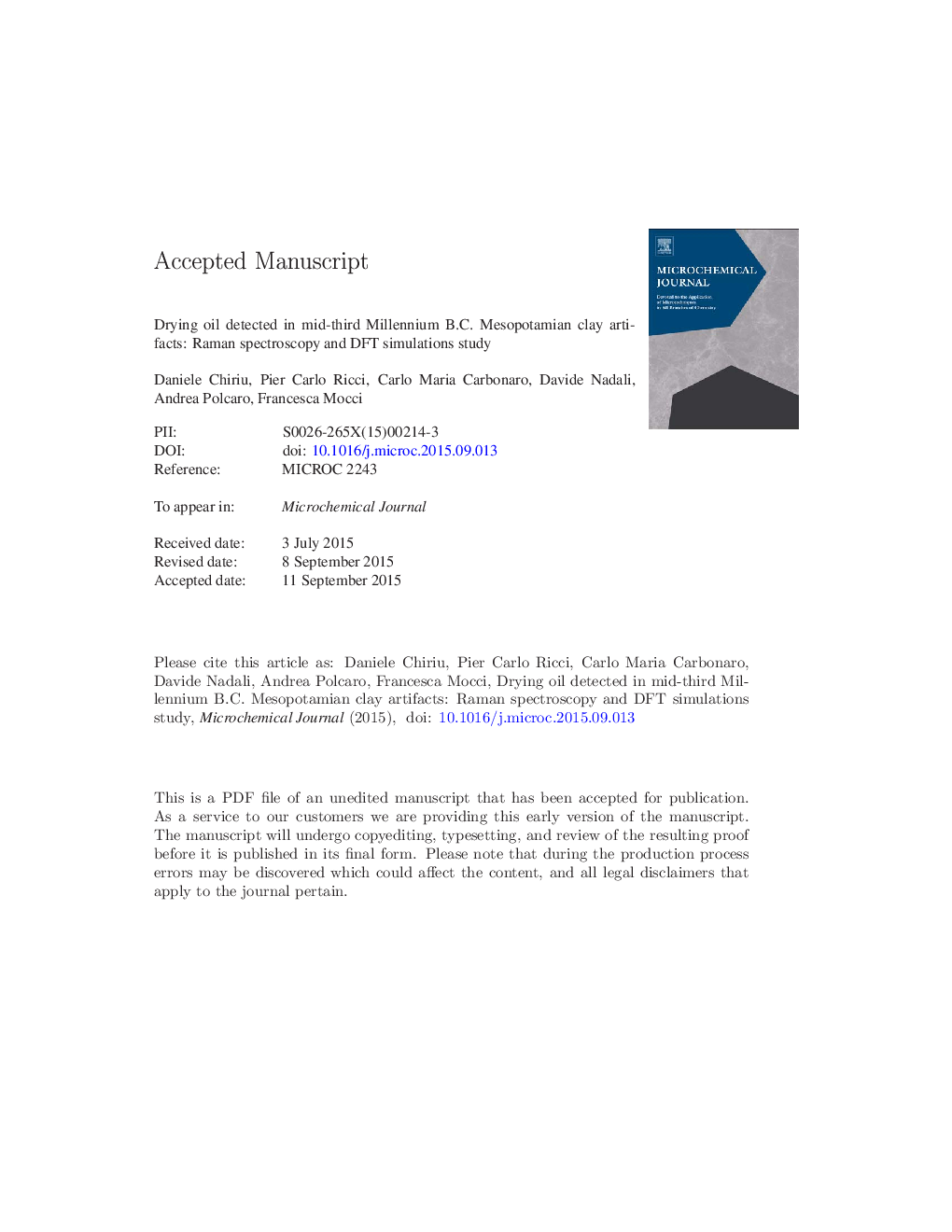| Article ID | Journal | Published Year | Pages | File Type |
|---|---|---|---|---|
| 7642278 | Microchemical Journal | 2016 | 39 Pages |
Abstract
The study of cultural heritage can take advantage of modern non-destructive analysis technique able to identify, among the others, the composition of the investigated ancient artifacts. In the present paper we applied Raman spectroscopy to analyze selected Mesopotamian materials from Kish kept in the Ashmolean Museum of the University of Oxford to investigate the pottery technique of that ancient people, with particular reference to the painting procedure. Beside the use of hematite and gypsum as red and white pigments respectively, the use of a near infrared laser excitation allowed to detect the presence of specific compounds applied at the pottery surface. Residual traces of the used oil were detected thanks to the fingerprint vibration at 1870 cmâ 1 which is ascribed to the CC stretching of the cyclopropenoid compound of some fatty acids and, in particular, assignable to the use of oils derived by sterculiaceae and malvaceae plants. By using DFT calculations we simulated the degradation process of the hypothesized initial oil and we propose the attribution of the final compound revealed by Raman analysis. From the reported experimental results we propose that the oil was applied all over the surface of the pottery as a primer before the painting decoration with the use of the dry oil technique.
Keywords
Related Topics
Physical Sciences and Engineering
Chemistry
Analytical Chemistry
Authors
Daniele Chiriu, Pier Carlo Ricci, Carlo Maria Carbonaro, Davide Nadali, Andrea Polcaro, Francesca Mocci,
